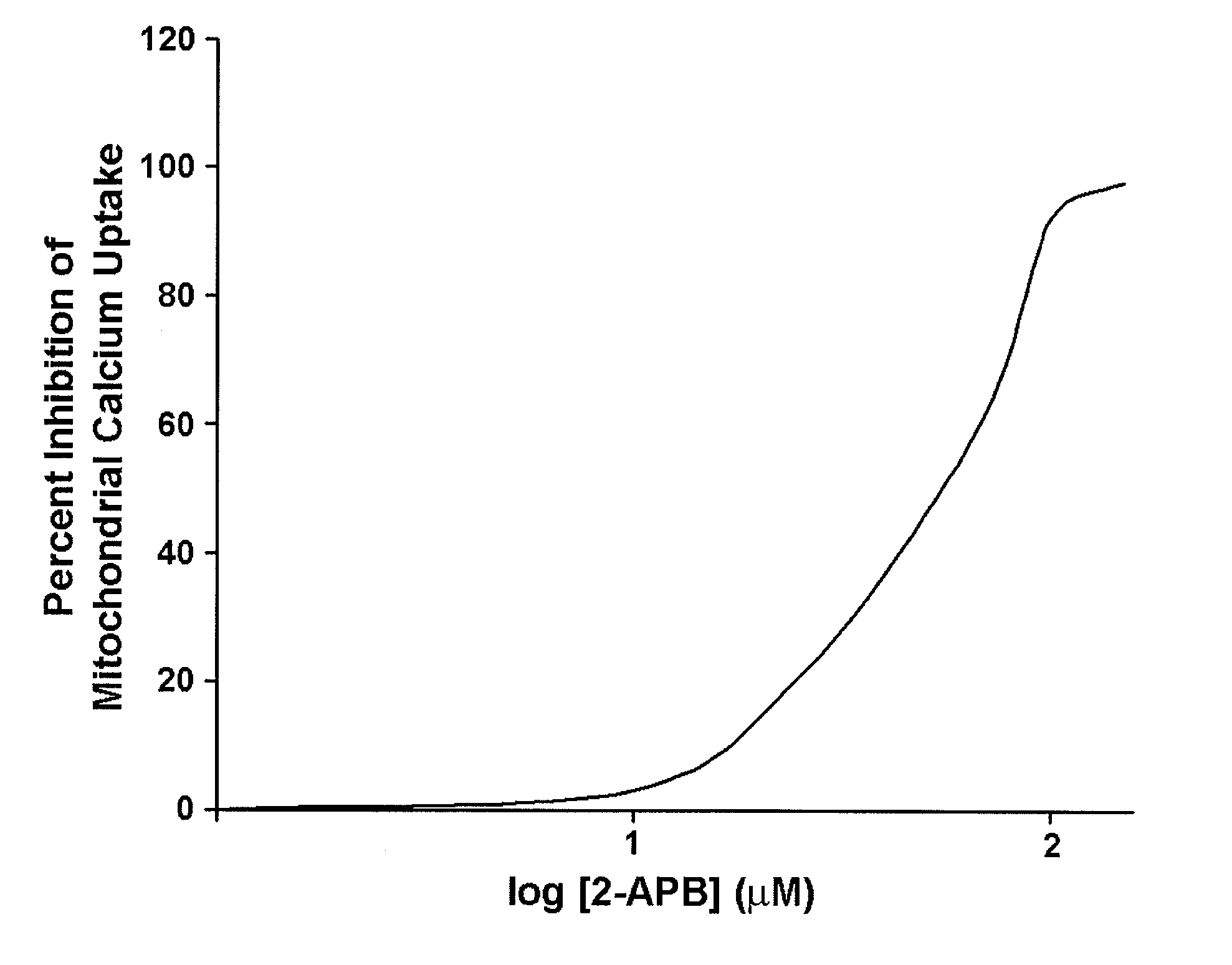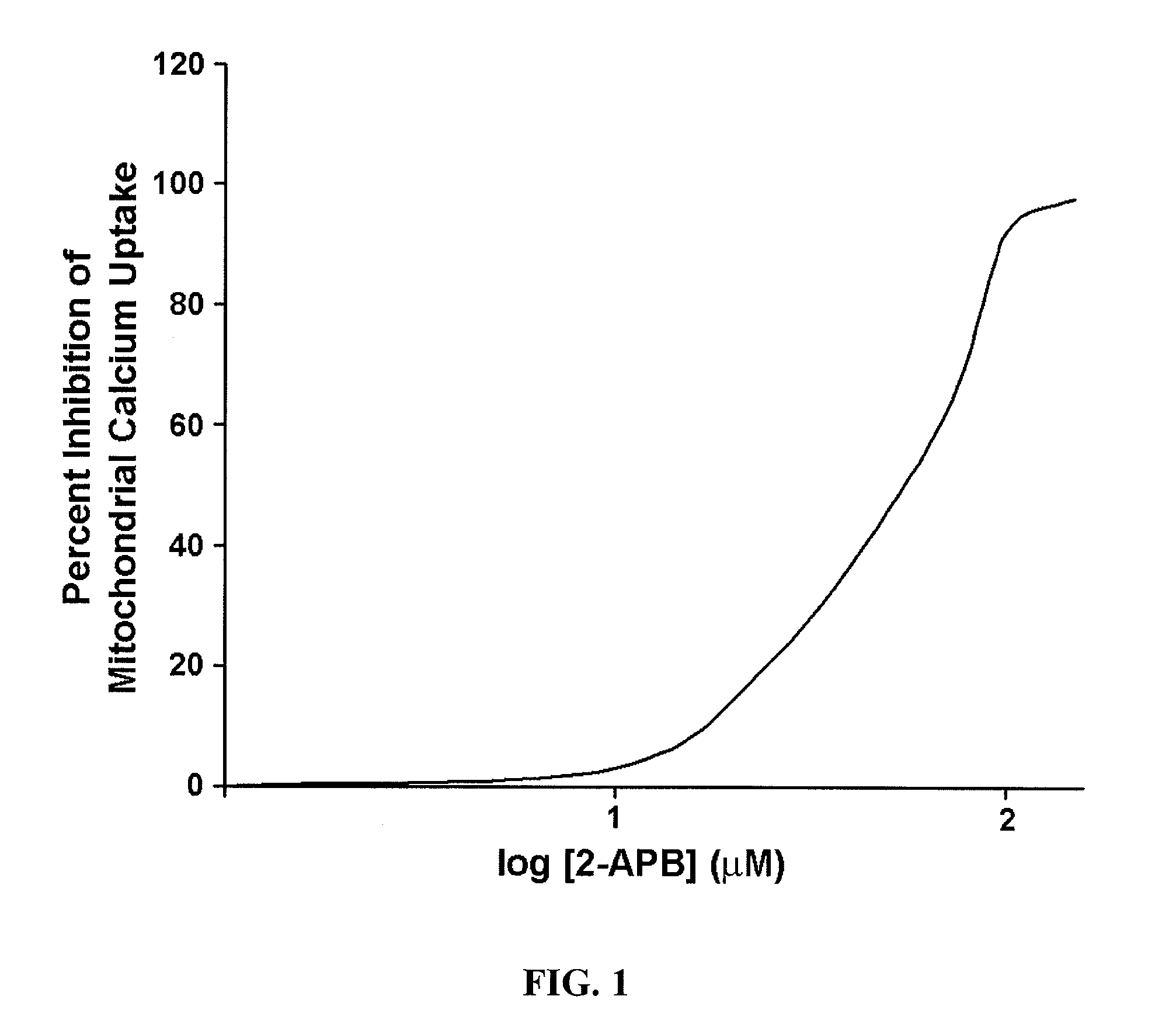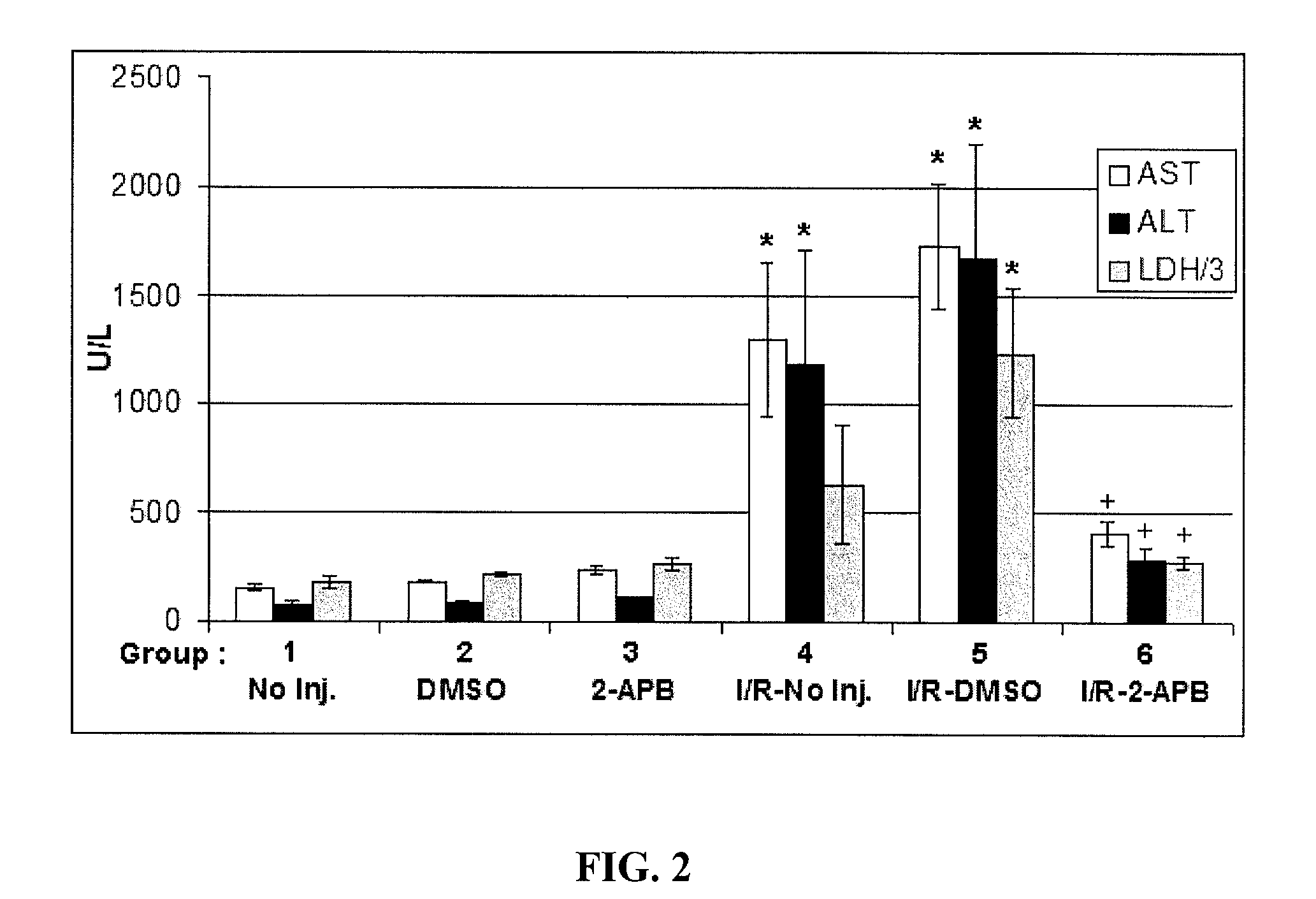Calcium Influx Inhibitors in the Treatment of Ischemia
a calcium influx inhibitor and ischemia technology, applied in the field of medicine and cell biology, can solve the problems of long waiting list, limited current organ preservation techniques, and considerable limitations in transplantation techniques, so as to facilitate surgical procedures, interrupt circulation, and reduce acute ischemia/reperfusion injury
- Summary
- Abstract
- Description
- Claims
- Application Information
AI Technical Summary
Benefits of technology
Problems solved by technology
Method used
Image
Examples
example 1
[0091] Rationale: The experiments in Example 1 were designed to test the effect of 2-APB on mitochondrial calcium influx in isolated liver mitochondria, and to confirm previous reports that ruthenium red is a reliable inhibitor or mitochondrial calcium influx.
[0092] Methods: The methods described herein are relevant to Examples 1 and 4. Livers were isolated from male Sprague-Dawley rats (300 g). Rats were anesthetized with isoflurane and sacrificed by cervical dislocation. Whole mitochondria were separated from rat liver as previously described by Knox et al. (2004). Briefly, the liver was minced and homogenized in liver homogenization buffer (LHB)(0.2 M mannitol, 50 mM sucrose, 10 mM KCl, and 1 mM Na2EDTA, pH=7.4, KOH). The homogenate was filtered through gauze and centrifuged 2 times for 10 min at 1,000× g. The supernatant was collected and centrifuged for 10 min at 3,000× g. The pellet was washed twice and resuspended in calcium-free LHB without EDTA to a concentration of 2 mg / m...
example 2
[0096] Rationale: The experiments in Example 2 were designed to test the in vivo ability of 2-APB to protect against liver ischemia / reperfusion injury, based on the data in Experiment 1 identifying 2-APB as a novel inhibitor of mitochondrial calcium influx and the hypothesis that inhibition of mitochondrial calcium influx is protective against ischemia / reperfusion injury.
[0097] Methods: Following overnight fast, male Sprague-Dawley rats were placed under general anesthesia with isoflurane gas (3%, 2 L O2). Via a midline incision, a laparotomy was performed and the portal vein, hepatic artery, and bile duct were identified and dissected free from surrounding structures. 2-APB (2 mg / kg in DMSO) or vehicle (DMSO) was injected into the portal vein, followed immediately by 1 hour of inflow occlusion to 70% of the liver, or by sham operation (n>3 / group). Approximately 70% liver ischemia was created by using an atraumatic vessel clamp (S&T Microclamp B-3, Fine Science Tools, Foster City, ...
example 3
[0106] Rationale: Example 2 shows that 2-APB protects against liver ischemia / reperfusion injury when administered prior to ischemia, and the experiments in Example 3 were designed to determine whether or not 2-APB is also protective when administered after the ischemic event, as would be the case in situations such as shock, trauma, and other clinical scenarios involving unexpected hypoxia.
[0107] Methods: Under isoflurane anesthesia, 18 rats underwent sham operation or 1 hour of warm ischemia to the superior 70% of the liver via atraumatic portal venous and hepatic arterial clamping as described in Example 2. 2-APB (2 mg / kg in DMSO), or vehicle (DMSO) was injected into the portal vein following 1 hour of ischemia, concurrent with removal of the vascular clamp. Animals were sacrificed after 3 hours of reperfusion (n=6 per group). Serum AST, ALT, and LDH levels were measured, and liver samples were evaluated histologically using H&E and TUNEL staining. To investigate the effect of 2-...
PUM
 Login to View More
Login to View More Abstract
Description
Claims
Application Information
 Login to View More
Login to View More - R&D
- Intellectual Property
- Life Sciences
- Materials
- Tech Scout
- Unparalleled Data Quality
- Higher Quality Content
- 60% Fewer Hallucinations
Browse by: Latest US Patents, China's latest patents, Technical Efficacy Thesaurus, Application Domain, Technology Topic, Popular Technical Reports.
© 2025 PatSnap. All rights reserved.Legal|Privacy policy|Modern Slavery Act Transparency Statement|Sitemap|About US| Contact US: help@patsnap.com



